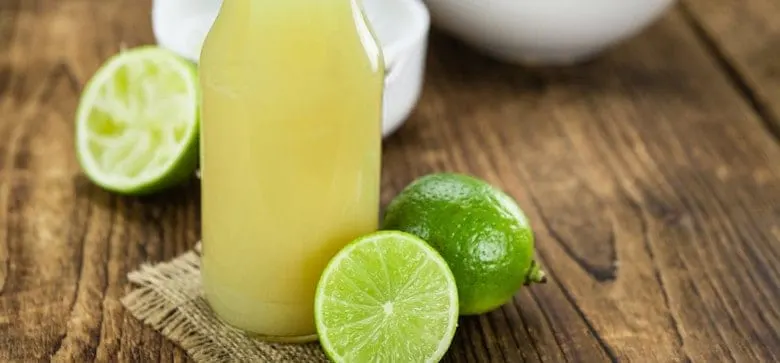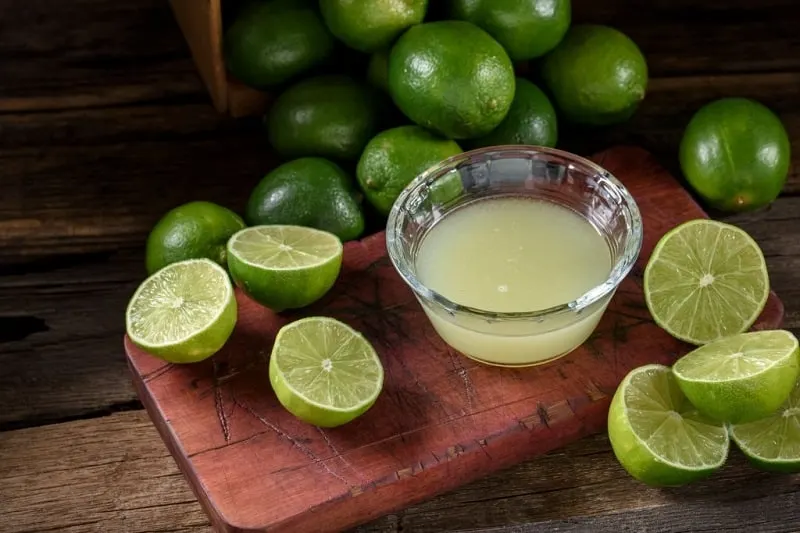Keeping yourself hydrated is important not just during the hot summer days but even during the winter season.
It helps boost your immune system and stay active throughout the day.
Most people are not a fan of drinking plain water; well, here is the good news; there are many alternative ways of keeping yourself hydrated.
You can always prepare yourself a glass of fresh orange juice, apple juice, or cranberry juice.
These fruit juices are not only delicious, but it will keep you energized the whole day. Another great alternative to staying hydrated is drinking lime juice.
Drinking lime juice on a hot summer day can be very refreshing. Lime is used for many purposes, starting from taking it as a fresh juice to improving tanned skin.
Lime juice is extracted from the lime using lime press and prepared as a drink with a mixture of water, salt, or sugar.
Many people prefer to prepare energy drinks in advance so that they can drink whenever they want. Now the question is, does lime juice go bad?
Does Lime Juice Go Bad? How Long Does Lime Juice Last?

Lime juice does go bad, but its shelf life differs on whether the juice is prepared fresh at home or you bought it from a store. Fresh lime juice made at home can last for about 3 to 4 days if stored in the refrigerator.
So in case, you plan on preparing fresh lime juice at home, make sure to store it in a proper container or bottle and keep it in the refrigerator to maximize its shelf life.
However, lime sold in the market contains preservatives. Preservatives are added to the juice to maximize its shelf life for an extended period.
Some juices manufactured for commercial purposes contain more preservatives, while some contain less.
Bottles of lime that contain more preservatives generally last for a year, and those with fewer preservatives last for about two weeks to one month, provided that the bottle is unopened.
Once you open the bottle of juice, it comes in contact with the air, and oxidation takes place, which leads to spoilage.
So once the bottle is opened, make sure to store it in the refrigerator as it lowers down the growth of harmful molds and bacteria. That way, the juice can last for about half a year.
You can also store lime juice in the freezer, which can last for about 12 months. But it should be stored in an airtight bottle or container.
Freezing helps to preserve the juice as harmful microorganisms grow only in temperature between 40-140F.
How to Tell if Lime Juice is Bad? Lime Juice Shelf Life!

Generally, lime juice does not go rancid quickly because it is highly acidic and makes it difficult for the bacteria to grow.
But if you don’t store your juice in the refrigerator, especially in the hot climate, it will spoil within a few hours.
The juice that contains preservatives can also go bad after a particular time. Here are some tips on how to tell if your lime juice has gone bad:
- One easy way to find out if your lime juice has gone wrong is to give it a sniff. Smell and check if there is any off-smell or weird smell.
- You can also taste the lime juice to find out if it has gone bad. If the juice doesn’t taste anything like lemon, discard it.
- Juice added with preservatives will have manufacturing and expiry date. So when you purchase lime juice from the market, make sure to check its expiry date. If the expiry date mentioned has gone past, do not drink or buy it.
- It is also important to note that if your lime juice turns brown, it does not mean that the juice has gone rancid. The change in color happens when you open a bottle of lime juice and forget to keep it in the refrigerator. It is considered safe to drink.
Conclusion

Lime juice not only keeps you hydrated by it is a rich source of Vitamin C. Vitamin C helps to prevent cold, and it has anti-inflammatory properties.
Lime is beneficial not only for drinking but for many other purposes.
Many people apply lime on their skin to get rid of suntan.
Lime can improve your digestion and helps in weight control. Also, lime is known to prevent kidney stones.
Make a habit of drinking a glass of lime juice every day as it has many medicinal properties.

Does Lime Juice Go Bad? How Long Does Lime Juice Last?
Ingredients
- Lime juice
- Air-tight containers or Ziplock bags
- Labels and markers
Instructions
- Read the guide thoroughly to learn how long it lasts.
- Label your container with the content and date and keep track of how much you’re using!
- Make sure to store in an airtight container in a cool, dark place (pantry or fridge).
- If frozen, thaw in the fridge before use. Always check for signs of spoilage before using.
